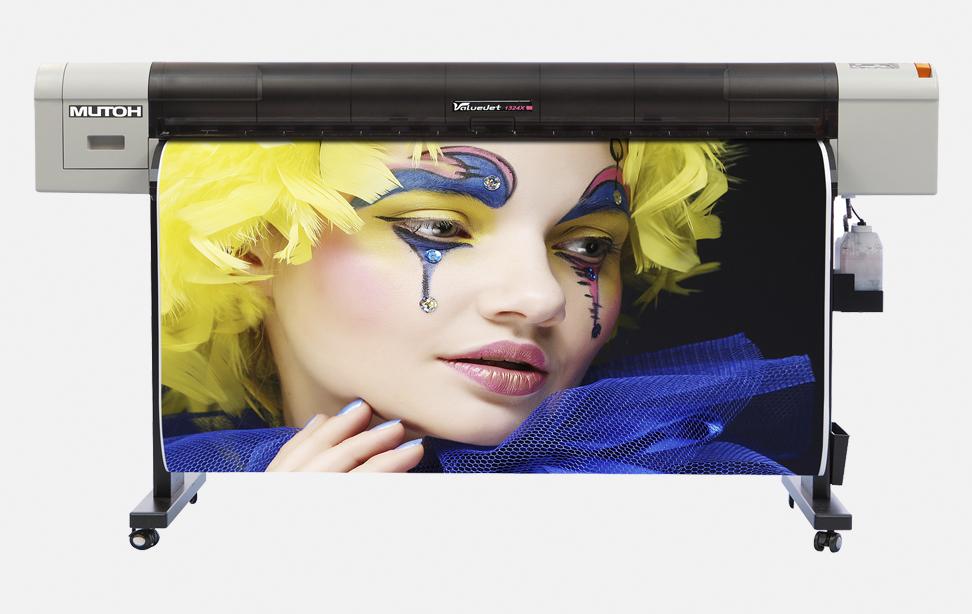
7 Major benefits of eco solvent printers
To see our range of eco sovent printers click here
While the influence of eco-friendliness has undoubtedly seen a number of changes in the world of printing, it is important that you don’t become too blinkered in your search for eco-friendly printing solutions.
The main reason for this advice is based solely on the fact that there is still a very legitimate place for solvent-based inks in today’s commercial printing environment. Were this not the case, then there would be no need or place for the industry’s compromise - eco-solvent inks. Yes, there are alternatives, such as water-based latex inks, but if you are familiar with printing techniques, you will know that there is no ‘one size fits all’ solution to all printing needs, and solvent-based inks still have a very legitimate place.
So, what exactly are the principal advantages of eco-solvent inks?
- Established use
- Quality
- Adaptability - can be used on wide range of substrates
- Reduced ventilation requirements and little odour
- Swift drying times
- Reduced maintenance and increased lifespan of printer heads
- Highly suitable for mid-priced wide-format printers
Established Use
Eco-solvent inks are an evolution of an established form of solvent ink that has been developed over many decades, thus benefitting from many of the more-recent advancements in ink quality.
Quality
For a commercial printing environment, quality will always be a critical element in such a competitive environment. While there are alternatives to eco-solvent inks available, with many printing substrates, it is difficult to reproduce the quality of print and richness of colour that eco-solvent inks can provide. Eco-solvent inks have a wider colour gamut and can provide a high-gloss finish that non-solvent inks are unable to.
Adaptability
Eco-solvent inks can be used on a wide range of substrates, from paper to wood and plastic. Eco solvent inks can also be used for fabric prints via the use of transfer printing. Eco-solvent inks are particularly good for printing on banners and signs that will be used outdoors. Eco-solvent inks are especially popular for banners as they adhere more strongly than water-based inks to plastic substrates.
Reduced ventilation
One of the major drawbacks of solvent ink use in printing was the necessity for a forced air environment to ensure that VOCs ere extracted from the working environment. Printers which use eco-solvent inks still require a ventilated environment, but not the same extent as solvent ink printers. Eco-solvent inks do not suffer from the same odour problems associated with solvent inks.
Swift drying times
Unlike solvent inks, eco-solvent inks require a shorter drying time. This is particularly useful where laminating is concerned. Less curing, or ‘degassing’ time is required with eco-solvent inks compared to solvent inks.
Reduced maintenance
In any business, time equals money. With printing machines, there is a double cost to maintenance – the cost to perform any maintenance in terms of man hours, and also the cost in loss of production – when a printer isn’t operating, it isn’t earning. Printers which use eco-solvent inks require less regular maintenance, while an added bonus is that eco solvent inks are less harmful to printer heads. For many of today’s wide-format printers which operate using eco-solvent inks, the printer heads should last the lifetime of the printer.
Highly suitably for low- and mid-priced wide-format printers
With the increased popularity of wide-format printers, especially in the lower-to-mid-price ranges, their ability to use eco-solvent ink has helped drive their popularity, particularly when taking into account all the points mentioned above.
Because of the variety and adaptability of today’s commercial printing machines, together with the variety of inks and substrates available for printing, chances are you will have questions you will still need answers to. Here at the Entwistle Group we have been involved in the world of commercial printing for over 60 years and we’re confident we’ll have the right answer to any questions you may have, so get in contact, either by giving us a call or sending us an email.